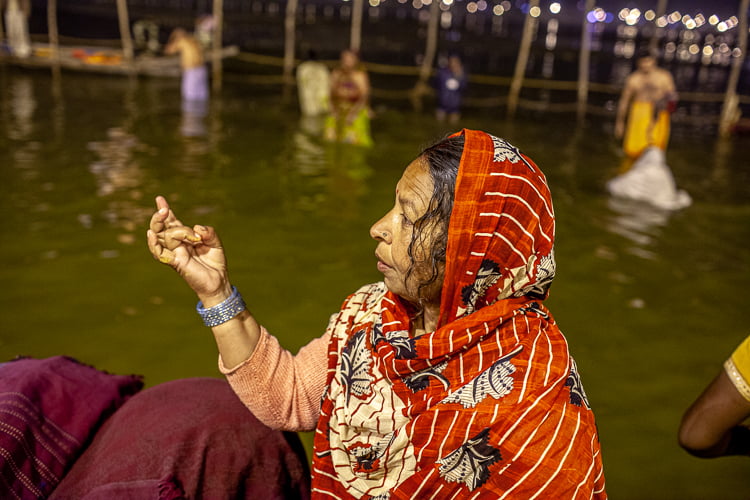About a decade ago I attended a magnificent religious festival at the city then called Allahabad. Approximately 100 million people attended from all over India and from around the world, gathering in a great temporary city on a sandy flood plain where three great rivers meet.
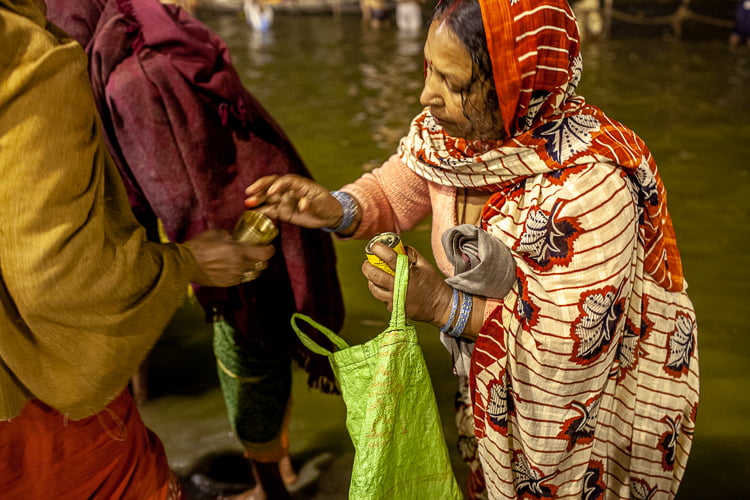
Two of those rivers, the Ganges and Yamuna, are actual and real; the third, joining the other two from the bowels of the earth, is metaphysical and mythical. The great Saraswati existed once but is now an allusion, flowing under the crust of the earth like a spiritual artery to join these and other divine rivers at a number of locations across India, locations called trivenis. These confluences are very auspicious, conveying great spiritual power and conferring huge benefits in the forgiving of wrongdoings and the achieving of moksha ( ie freedom from the eternal cycles of rebirth ) for those pilgrims who make that journey.
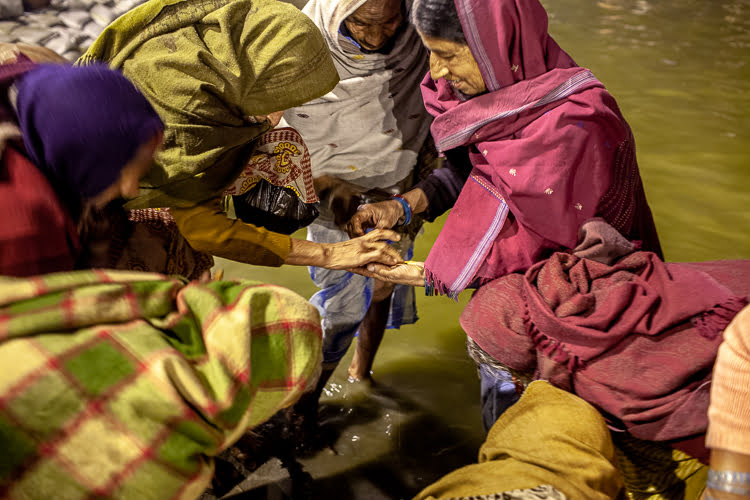
Undoubtedly the greatest pleasure of the festival was walking through the multitudes of people at prayer beside the Ganges. That experience was amplified under the artificial sodium lamps at nightime; those thousands in worship were imbued with strange colours and, in the dimmest areas where the lamps were missing or of lower power, resembled ghosts of colour climbing up and down the river’s banks in the darkest parts of the night. In the strange light the fervour of prayer was also amplified.

One of the most important parts of the riverbank rituals, especially for women, was the creation of pastes for the tilaka, or tika, the annointing spot of colour found on the forehead in the position of the third eye, or ajna chakra. Regarded as being able to provide perception beyond ordinary sight, and a spiritual channel to the realms of enlightenment and higher consciousness, annointing this spot is a critical devotional ritual. The tilaka is also a mark of identification, traditionally denoting a particular facet of Hindu faith, marital status and even familial status, for example a bereavement. At this festival groups of women huddled together, feverishly mixing a variety of ingredients used both as tilaka for themselves or paste to use in the making of their pujas ( prayers and offerings they send out into the river, often with a tea light ).
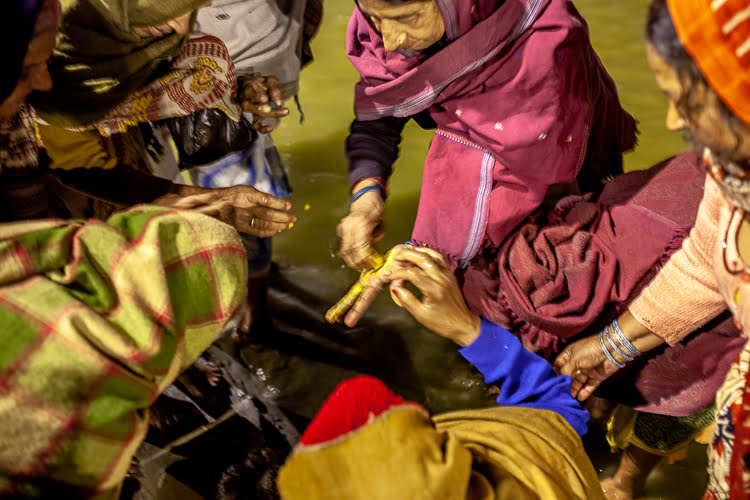
The ingredients can include sandalwood paste, charcoal, red lead, vibhuti, and sacred ash reserved for Hindu rites and sects. Tilak is also composed of kumkum, made from turmeric or saffron. Vermilion or Sindur is another reddish-colored item that is used and is made from turmeric, alum, or lime. Clay is also often used. See here for more information.
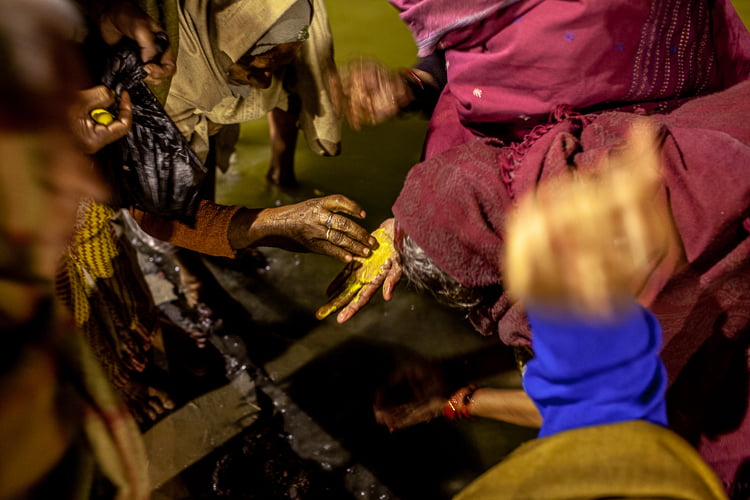
For more photographs of worship and ritual by night at the festival, please see a large gallery of images here. I cannot describe the feeling of privilege to have been a part of this mass congregation of pilgrims who seemed mostly to rest by day and join together under sodium lamps to collectively worship.
